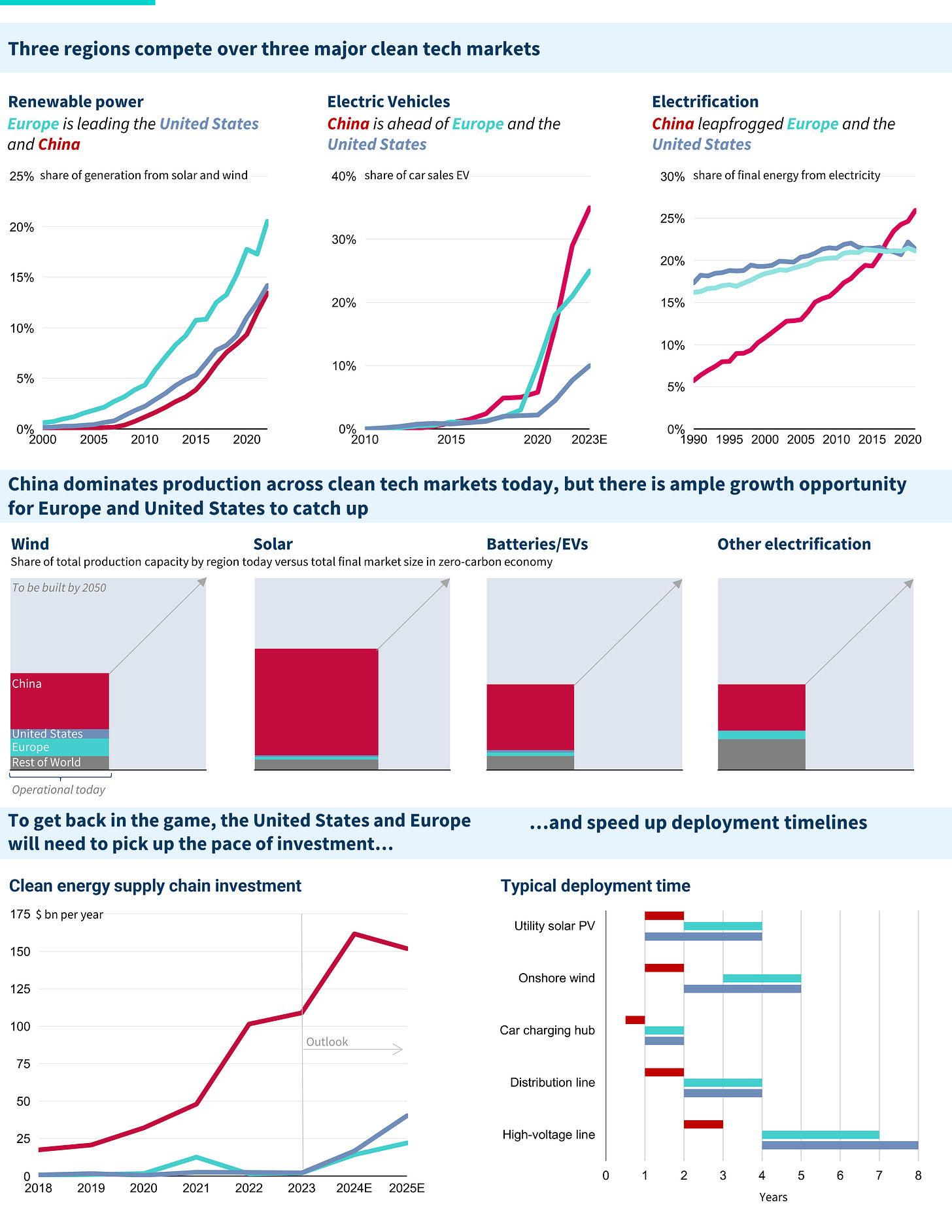X-Change: The Race to the Top
Cleantech competition between China, Europe, and the United States
CERA gave you the fossil fuel story last week; here’s what’s really going on in the energy transition - it’s a race to the top. Please see our latest report below, and happy to get any thoughts on this.
With best wishes, Kingsmill Bond.
In the global “race to the top” to transition from fossil energy to clean energy, China is in the lead in many of the key areas of competition. However, the race is still at an early stage, Europe and the United States are back in the game, and everything is to play for.
We focus on the leading regions and races. We look at China, Europe, and the United States, which make up 80%–90% of deployment of key clean technologies. We focus on the competition in the clean technology supply chain, solar and wind deployment, electric vehicle (EV) sales, and electrification.
China dominates the supply chain, but change is happening. China has outspent the United States and Europe 10-fold in the past five years to achieve market share in manufacturing of over 90% in solar and 70% in batteries. But United States and European capital expenditure is set to increase 16-fold by 2025, and opportunities for leadership abound; only 20% of final energy demand has been electrified; and technologies to enhance flexibility are still in the early stages.
Europe leads in solar and wind share of generation. Europe has the largest share of electricity from solar and wind, and all three regions are moving rapidly up the S-curve towards solar and wind dominance.
China is leading in the EV race, and Europe is not far behind. Over one-third of Chinese car sales are already electric, and this is likely to rise to 90% by the end of the decade. In Europe, approximately one-quarter of vehicle sales are electric; and although the United States has been lagging, it is also moving rapidly up the S-curve.
China has leapfrogged in the electrification race. Over the past decade, China has leapfrogged a static United States and Europe to increase the electricity share of final energy by 1 percentage point every year to a level of 27% in 2022, more than 5 percentage points higher than them. The main driver has been the electrification of Chinese industry, which has already driven a 2014 global peak in industrial demand for fossil fuel energy.
This is a technology revolution led by China. Although the United States has driven technology revolutions for a century, the renewable revolution is currently driven by China, and needs to be understood through that lens. China is now an electrostate, with half of primary energy going to electricity.
Security needs will motivate the United States and Europe. In 2022, the United States and Europe woke up to the challenge of Chinese leadership in the energy technologies of the future, and now the race is more even. Barriers to change are barriers to geopolitical influence, and leaders will need to find solutions to deploy cleantech if they wish to avoid relative decline.
The competition will open up more opportunity for the Global South. Competition between the leading regions is stimulating more investment and innovation, and will drive down costs faster. That speeds up the technology transfer to the rest of the world and hastens the point where fossil fuel demand starts to decline.
Cooperation has a key role when we are facing a common crisis of climate change. Just as on the sports field, competition requires cooperation in standard setting, technology transfer, and trade.
The Race to the Top in Six Charts







Thanks for this!